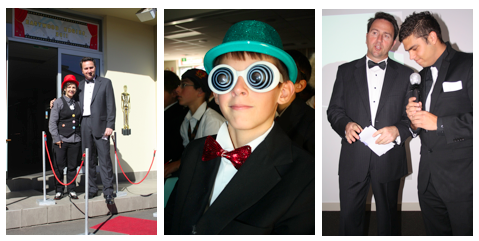The day was a huge success. The students approached the whole event with an attitude of celebration and affirmation. We had comperes interviewing students on the red carpet, groups had their photos taken in front of the paparazzi -flashes blazing. On the back of the invitations was a voting form with a whole range of different categories for peer voting; Best use of Technology, Best use of Storytelling, Best use of Humour, Most Educational, Most Informative etc. The final award presented was the ‘Edgie’ - Best overall presentation.

It was amazing to see the effect of the Edgies on the students. The boys were full of energy for the sessions after the Edgies. We presented the next challenge and many used their time to start their research straight away. I think it had something to do with the fact that they had been made aware of the standards expected as well as using the really good presentations as a springboard for their own ideas. It is amazing what effect a $2.80 trophy can have.
All photos for the day credited to Simone Maciel ©2011







































